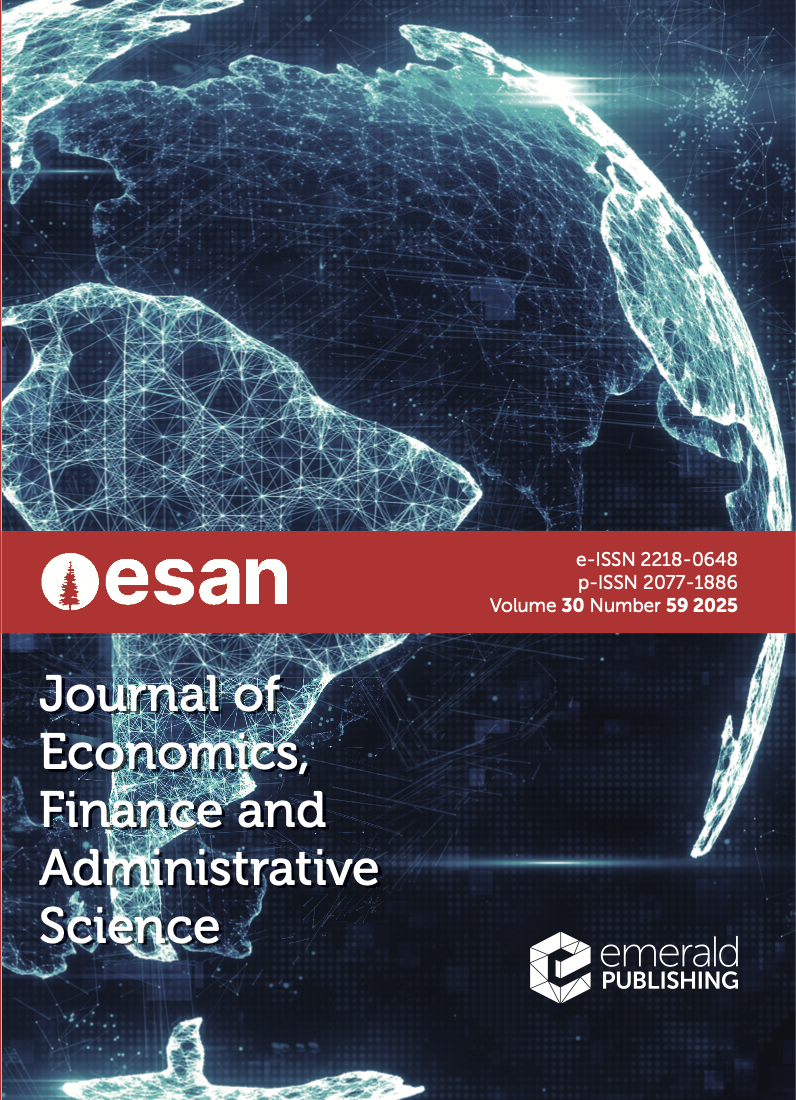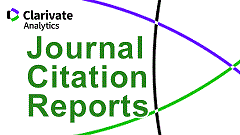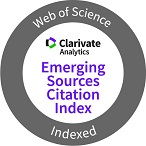The impact of behavioral biases on investment decisions: a serial mediation analysis
Keywords:
Decision-making, Investment, Heuristics, Psychological biases, Sequential mediationAbstract
PurposeThe purpose of this study is to investigate the impact of behavioral biases on investment decisions through a serial mediation of overconfidence and disposition effects.
Design/methodology/approachThe authors assess the behavioral biases affecting the investment decisions of life insurance policyholders through the serial mediation of overconfidence and disposition effects using a structured questionnaire. The study included 501 life insurance policyholders who were selected using a snowball sampling technique.
FindingsThe results of this study revealed that behavioral biases influence the investment decisions of life insurance policyholders. The results also support the serial mediation model, where behavioral biases influence the investment decisions of life insurance policyholders via overconfidence and disposition effects.
Research limitations/implicationsThis study makes a theoretical contribution to the field of behavioral finance by exploring the influences of behavioral biases on investment decisions. It also introduces overconfidence and disposition effects as serial mediators between behavioral biases and investment decisions. The study will be helpful for researchers, academicians and policymakers in the development of a more comprehensive model in the area of behavioral finance and in raising awareness regarding those biases among policyholders in order to improve their investment strategy.
Originality/valueThis study has extended the ongoing simple mediation model by integrating overconfidence and disposition effects in a serial mediation model between behavioral biases and investment decisions. The study will contribute to the area of behavioral finance, as it is the first time this particular study has been conducted according to the authors’ knowledge.
Downloads
References
Abideen, Z.U., Ahmed, Z., Qiu, H. and Zhao, Y. (2023), “Do behavioral biases affect investors' investment decision making? Evidence from the Pakistani equity market”, Risks, Vol. 11 No. 6, p. 109, doi: 10.3390/risks11060109.
Acker, D. and Duck, N.W. (2008), “Cross-cultural overconfidence and biased selfattribution”, Journal of Socio-Economics, Vol. 37 No. 5, pp. 1815-1824, doi: 10.1016/j.socec.2007.12.003.
Adil, M., Singh, Y. and Ansari, M.S. (2021), “How financial literacy moderate the association between behaviour biases and investment decision?”, AJAR (Asian Journal of Accounting Research), Vol. 7 No. 1, pp. 17-30, doi: 10.1108/ajar-09-2020-0086.
Akgul, E.F. and Cetin, I.B. (2021), “An investigation on behavioral biases in ship investments of small-sized shipping companies”, Maritime Business Review, Vol. 6 No. 4, pp. 377-391, [Preprint], doi: 10.1108/MABR-08-2020-0049.
Ali, M., Choi-Meng, L., Aw, E.C.X., Puah, C.H. and Barut, A. (2023), “Real estate investment decisions in COVID-19 crisis: the effect of perception and behavioral biases”, International Journal of Housing Markets and Analysis, Vol. 17 No. 1, pp. 32-47, [Preprint], doi: 10.1108/ijhma-12-2022-0173.
Almansour, B.Y. (2020), “Cryptocurrency market: behavioral finance perspective”, The Journal of Asian Finance, Economics and Business, Vol. 7 No. 12, pp. 159-168, doi: 10.13106/jafeb.2020.vol7.no12.159.
Altaf, H. and Jan, A. (2023), “Generational theory of behavioral biases in investment behavior”, Borsa Istanbul Review, Vol. 23 No. 4, pp. 834-844, doi: 10.1016/j.bir.2023.02.002.
Anderson, J.C. and Gerbing, D.W. (1988), “Structural equation modeling in practice: a review and recommended two-step approach”, Psychological Bulletin, Vol. 103 No. 3, pp. 411-423, doi: 10.1037/0033-2909.103.3.411.
Asri, M. (2013), Behavioral Finance, BPFEYogyakarta, Yogyakarta.
Baker, H.K., Kumar, S., Goyal, N. and Gaur, V. (2019), “How financial literacy and demographic variables relate to behavioral biases”, Managerial Finance, Vol. 45 No. 1, pp. 124-146, doi: 10.1108/mf-01-2018-0003.
Bansal, T. (2020), “Behavioral finance and COVID-19: cognitive errors that determine the financial future”, Social Science Research Network, [Preprint], doi: 10.2139/ssrn.3595749.
Barber, B.M. and Odean, T. (2001), “Boys will be boys: gender, overconfidence, and common stock investment”, Quarterly Journal of Economics, Vol. 116 No. 1, pp. 261-292, doi: 10.1162/003355301556400.
Barber, B.M. and Odean, T. (2013), “The behavior of individual investors”, in Handbook of the Economics of Finance, pp. 1533-1570, doi: 10.1016/b978-0-44-459406-8.00022-6.
Bashir, T. (2013), “Impact of behavioral biases on investors decision making: male vs female”, IOSR Journal of Business and Management, Vol. 10 No. 3, pp. 60-68, doi: 10.9790/487x-1036068.
Bernoulli, D. (1738), “Specimen theoriae novae de mensura sortis”, in Commentarii Academiae Scientiarum Imperialis Petropolitanae, Vol. 5, pp. 175-192.
Bihari, A., Dash, M., Kar, S.K., Muduli, K., Kumar, A. and Luthra, S. (2022), “Exploring behavioural bias affecting investment decisionmaking: a network cluster based conceptual analysis for future research”, International Journal of Industrial Engineering and Operations Management, Vol. 4 Nos 1/2, pp. 19-43, doi: 10.1108/ijieom-08-2022-0033.
blatt, M., Keloharju, M. and Linnainmaa, J.T. (2012), “IQ, trading behavior, and performance”, Journal of Financial Economics, Vol. 104 No. 2, pp. 339-362, doi: 10.1016/j.jfineco.2011.05.016.
Boudreau, M., Gefen, D. and Straub, D.W. (2001), “Validation in information systems research: a state-of-the-art assessment”, Management Information Systems Quarterly, Vol. 25 No. 1, p. 1, doi: 10.2307/3250956.
Calvet, L.E., Campbell, J. and Sodini, P. (2009), “Measuring the financial sophistication of households”, The American Economic Review, Vol. 99 No. 2, pp. 393-398, doi: 10.1257/aer.99.2.393.
Chen, H., Qi, Y. and Tang, Y. (2020), “The role of investor sentiment in market anomalies: the case of overconfidence”, Journal of Behavioral and Experimental Finance, Vol. 26.
Damayanti, N.A.I.P.P. and Rokhim, R. (2022), “Investment behavioral biases in Indonesia millennial investors behavior during pandemic”, Journal of Entrepreneurship and Business, Vol. 3 No. 2, pp. 83-93, doi: 10.24123/jeb.v3i2.5089.
Daniel, K., Hirshleifer, D. and Subrahmanyam, A. (1998), “Investor psychology and security Market under- and overreactions”, Journal of Finance, Vol. 53 No. 6, pp. 1839-1885, doi: 10.1111/0022-1082.00077.
Davis, R.E., Campbell, R., Hildon, Z., Hobbs, L. and Michie, S. (2015), “Theories of behaviour and behaviour change across the social and behavioural sciences: a scoping review”, Health Psychology Review, Vol. 9 No. 3, pp. 323-344, doi: 10.1080/17437199.2014.941722.
De Bondt, W.F.M. and Thaler, R.H. (1995), “Chapter 13 Financial decision-making in markets and firms: a behavioral perspective”, in Handbooks in Operations Research and Management Science, Elsevier BV, pp. 385-410, doi: 10.1016/s0927-0507(05)80057-x.
Dhar, R. and Zhu, N. (2006), “Up close and personal: investor sophistication and the disposition effect”, Management Science, Vol. 52 No. 5, pp. 726-740, doi: 10.1287/mnsc.1040.0473.
Ditto, P.H. and Lopez, D.S. (1992), “Motivated skepticism: use differential decision criteria for preferred and non preferred conclusions”, Journal of Personality and Social Psychology, Vol. 63 No. 4, pp. 568-584.
Edwards, W. (1982), “Conservatism in human information processing (excerpted)”, in Kahneman, D., Slovic, P. and Tversky, A. (Eds), Judgment under Uncertainty: Heuristics and Biases, CambridgeUniversity Press, New York, NY.
Field, A.P. (2005), Discovering Statistics Using SPSS, Sage Publications, London.
Fitri, H.K. and Cahyaningdyah, D. (2021), “The Influence of representativeness on investment decision through overconfidence”, Management Analysis Journal, Vol. 10 No. 2, pp. 243-256.
Gennaioli, N., Shleifer, A. and Vishny, R.W. (2015), “Money doctors”, Journal of Finance, Vol. 70 No. 1, pp. 91-114, doi: 10.1111/jofi.12188.
Glaser, M. and Weber, M. (2007), “Overconfidence and trading volume”, Geneva Risk and Insurance Review, Vol. 32 No. 1, pp. 1-36, doi: 10.1007/s10713-007-0003-3, available at: https://ssrn.com/abstract=976374
Guenther, B. and Lordan, G. (2023), “When the disposition effect proves to be rational: experimental evidence from professional traders”, Frontiers in Psychology, Vol. 14, 1091922, doi: 10.3389/fpsyg.2023.1091922.
Hair, J.F., Sarstedt, M., Hopkins, L. and Kuppelwieser, G.V. (2014), “Partial least squares structural equation modeling (PLSSEM)”, European Business Review, Vol. 26 No. 2, pp. 106-121, doi: 10.1108/ebr-10-2013-0128.
Hair, J.F., Sarstedt, M., Ringle, C.M. and Gudergan, S.P. (2017), Advanced Issues in Partial Least Squares Structural Equation Modeling, SAGE Publications, Thousand Oaks.
Haryanto, S., Subroto, A. and Ulpah, M. (2020), “Disposition effect and herding behavior in the cryptocurrency market”, Journal of Industrial and Business Economics, Vol. 47 No. 1, pp. 115-132, doi: 10.1007/s40812-019-00130-0.
He, H. and Li, X. (2019), “Disposition effect and price trends in financial markets”, Journal of Financial and Quantitative Analysis, Vol. 54 No. 1, pp. 309-340.
Henseler, J., Ringle, C.M. and Sarstedt, M. (2015), “A new criterion for assessing discriminant validity in variance-based structural equation modeling”, Journal of the Academy of Marketing Science, Vol. 43 No. 1, pp. 115-135, doi: 10.1007/s11747-014-0403-8.
Henseler, J., Dijkstra, T.K., Sarstedt, M., Ringle, C.M., Diamantopoulos, A., Straub, D.W., Ketchen, D.J., Hair, J.F., Hult, G.T.M. and Calantone, R.J. (2014), “Common beliefs and reality about partial least squares: comments on Rönkkö and Evermann (2013)”, Social Science Research Network, (Preprint), available at: https://autopapers.ssrn.com/sol3/papers.cfm?abstract_id=2428747
Henseler, J., Hubona, G. and Ray, P.A. (2016), “Using PLS path modeling in new technology research: updated guidelines”, Industrial Management and Data Systems, Vol. 116 No. 1, pp. 2-20, doi: 10.1108/imds-09-2015-0382.
Hossain, T. and Siddiqua, P. (2022), “Exploring the influence of behavioral aspects on stock investment decision-making: a study on Bangladeshi individual investors”, PSU Research Review, [Preprint], doi: 10.1108/prr-10-2021-0054.
Hoxha, V. and Hasani, I. (2022), “Decision-making biases in property investments in Prishtina, Kosovo”, Journal of Property Investment and Finance, Vol. 41 No. 2, pp. 155-181, doi: 10.1108/jpif-04-2022-0031.
Jain, J.C., Walia, N. and Gupta, S. (2019), “Evaluation of behavioral biases affecting investment decision making of individual equity investors by fuzzy analytic hierarchy process”, Review of Behavioral Finance, Vol. 12 No. 3, pp. 297-314, doi: 10.1108/rbf-03-2019-0044.
Jiang, G., Yao, T. and Yu, T. (2020), “Disposition effect, investor attention, and stock market volatility”, Journal of Banking and Finance, Vol. 114.
Jonas, E., Schulz-Hardt, S., Frey, D. and Thelen, N. (2001), “Confirmation bias in sequential information search after preliminary decisions: an expansion of dissonance theoretical research on selective exposure to information”, Journal of Personality and Social Psychology, Vol. 80 No. 4, pp. 557-571, doi: 10.1037/0022-3514.80.4.557.
Kapoor, S. and Prosad, J.M. (2017), “Behavioural finance: a review”, Procedia Computer Science, Vol. 122, pp. 50-54, doi: 10.1016/j.procs.2017.11.340.
Kartini, K. and Nahda, K. (2021), “Behavioral biases on investment decision: a case study in Indonesia”, Journal of Asian Finance, Economics and Business, Vol. 8 No. 3, pp. 1231-1240, doi: 10.13106/jafeb.2021.vol8.no3.1231.
Kasoga, P.S. (2021), “Heuristic biases and investment decisions: multiple mediation mechanisms of risk tolerance and financial literacy—a survey at the Tanzania stock market”, Journal of Money and Business, Vol. 1 No. 2, pp. 102-116, doi: 10.1108/jmb-10-2021-0037.
Kinatta, M.M., Kaawaase, T.K., Munene, J.C., Nkote, I. and Nkundabanyanga, S.K. (2021), “Cognitive bias, intuitive attributes and investment decision quality in commercial real estate in Uganda”, Journal of Property Investment and Finance/Journal of Property Investment and Finance, Vol. 40 No. 2, pp. 197-219, doi: 10.1108/jpif-11-2020-0129.
Kuhl, T., Scheibe, S. and Sommer, D. (2021), “Fuzzy trace theory and overconfidence: a theoretical integration and meta-analysis”, Psychological Bulletin, Vol. 147 No. 4, pp. 400-435.
Kumar, A. and Lee, C.M. (2020), “Words matter: how news sentiment affects economic decisions”, Review of Financial Studies, Vol. 33 No. 8, pp. 3861-3899.
Lo, A.W. (2004), “The adaptive markets hypothesis: market efficiency from an evolutionary perspective”, Social Science Research Network, [Preprint], available at: https://papers.ssrn.com/sol3/Delivery.cfm/SSRN_ID602222_code17399.pdf?abstractid=602222andmirid=1
Luo, G.Y. (2012), “The psychological explanation of asset price overreaction and underreaction to new information: representativeness heuristic and conservatism bias”, Journal of Accounting and Finance, Vol. 12 No. 2, pp. 38-50.
Markowitz, H.M. (1952), “Portfolio selection”, Journal of Finance, Vol. 7 No. 1, p. 77, doi: 10.2307/2975974.
Martinez-Conde, S. and Macknik, S.L. (2020), “The influence of behavioral biases on neuroscience research and Practice”, Nature Reviews Neuroscience, Vol. 21 No. 5, pp. 268-277.
Maziriri, E.T., Nyagadza, B. and Chuchu, T. (2022), “Innovation conviction, innovation mindset and innovation creed as precursors for the need for achievement and women's entrepreneurial success in South Africa: entrepreneurial education as a moderator”, European Journal of Innovation Management, Vol. 27 No. 4, pp. 1225-1248, doi: 10.1108/EJIM-03-2022-0156.
Messis, P. and Zapranis, A. (2014), “Herding behaviour and volatility in the athens stock exchange”, The Journal of Risk Finance, Vol. 15 No. 5, pp. 572-590, doi: 10.1108/jrf-04-2014-0054.
Mohamad, S.S., Rusdi, S.D., Hashim, N.H. and Husin, N. (2014), “The influence of intrinsic brand cues in intangible service industries: an application to life insurance services”, Procedia - Social and Behavioral Sciences, Vol. 130 No. 609, pp. 347-353, doi: 10.1016/j.sbspro.2014.04.041.
Mohanty, S., Patnaik, B., Satpathy, I. and Sahoo, S.K. (2023), “Cognitive biases and financial decisions of potential investors during Covid-19: an exploration”, Arab Gulf Journal of Scientific Research, [Preprint], doi: 10.1108/agjsr-12-2022-0296.
Ndawula, Y.K., Mori, N. and Nkote, I. (2023), “Effects of behavioral biases on life insurance demand decisions in Uganda”, International Journal of Social Economics, [Preprint], doi: 10.1108/ijse-03-2023-0201.
Neneh, B.N. (2019), “From entrepreneurial alertness to entrepreneurial behavior: the role of trait competitiveness and proactive personality”, Personality and Individual Differences, Vol. 138, pp. 273-279, doi: 10.1016/j.paid.2018.10.020.
Noble, S. and Schewe, C.D. (2003), “Cohort segmentation”, Journal of Business Research, Vol. 56 No. 12, pp. 979-987, doi: 10.1016/s0148-2963(02)00268-0.
Nomi, M. and Sabbir, Md.M. (2020), “Investigating the factors of consumers’ purchase intention towards life insurance in Bangladesh: an application of the Theory of Reasoned Action”, Asian Academy of Management Journal/Asian Academy of Management Journal, Vol. 25 No. 2, pp. 135-165, doi: 10.21315/aamj2020.25.2.6.
Oluwatayo, J.A. (2012), “Validity and reliability issues in educational research”, Journal of Educational and Social Research, Vol. 2 No. 2, p. 391, available at: https://www.richtmann.org/journal/index.php/jesr/article/download/11851/11458
Park, J., Konana, P., Gu, B., Kumar, A. and Raghunathan, R. (2010), “Confirmation bias, overconfidence, and investment performance: evidence from stock message boards”, Social Science Research Network, [Preprint], doi: 10.2139/ssrn.1639470.
Parveen, S., Satti, Z.W., Subhan, Q.A., Riaz, N., Baber, S.F. and Bashir, T. (2021), “Examining investors' sentiments, behavioral biases and investment decisions during COVID-19 in the emerging stock market: a case of Pakistan stock market”, Journal of Economic and Administrative Sciences, Vol. 39 No. 3, pp. 549-570, [Preprint], doi: 10.1108/jeas-08-2020-0153.
Pitthan, F. and Witte, K.D. (2022), “Puzzles of insurance demand and its biases: a survey on the role of behavioral biases and financial literacy on insurance demand”, Journal of Behavioral and Experimental Finance, Vol. 30 No. 20, pp. 104-171, doi: 10.1016/j.jbef.2021.100471.
Plous, S. (1994), “The psychology of judgment and decision making”, Choice Reviews Online, Vol. 31 No. 05, pp. 31-2965, doi: 10.5860/choice.31-2965.
Podsakoff, P.M., MacKenzie, S.B., Lee, J.Y. and Podsakoff, N.P. (2003), “Common method biases in behavioral research: a critical review of the literature and recommended remedies”, Journal of Applied Psychology, Vol. 88 No. 5, pp. 879-903, doi: 10.1037/0021-9010.88.5.879.
Pradhan, A. (2021), “Quantitative model for impact of behavioral biases on asset allocation decisions: a case study of investors in UAE”, Journal of Asset Management, Vol. 22 No. 7, pp. 573-580, doi: 10.1057/s41260-021-00239-9.
Prosad, J.M., Kapoor, S. and Sengupta, J. (2015), “Behavioral biases of Indian investors: a survey of Delhi-NCR region”, Qualitative Research in Financial Markets, Vol. 7 No. 3, pp. 230-263, doi: 10.1108/qrfm-04-2014-0012.
Rasheed, M.H., Rafique, A., Zahid, T. and Akhtar, M.W. (2018), “Factors influencing investor's decision making in Pakistan: moderating the role of locus of control”, Review of Behavioral Finance, Vol. 10 No. 1, pp. 70-87, doi: 10.1108/RBF-05-2016-0028.
Rau, H.A. (2015), “The disposition effect in team investment decisions: experimental evidence”, Journal of Banking and Finance, Vol. 61, pp. 272-282, doi: 10.1016/j.econlet.2014.01.020.
Raza, M.W. and Mohsin, H.M. (2016), “Portfolio management and disposition effect empirical evidence from Pakistan”, VFAST Transactions on Education and Social Sciences, Vol. 4 No. 1, pp. 33-41, available at: https://vfast.org/journals/index.php/VTSE@
Ritika and Kishor, N. (2020), “Development and validation of behavioral biases scale: a SEM approach”, Review of Behavioral Finance, Vol. 14 No. 2, pp. 237-259, doi: 10.1108/rbf-05-2020-0087.
Savor, P. and Wilson, M. (2019), “The role of overconfidence and asymmetric information in pricing and trading behavior”, Journal of Financial and Quantitative Analysis, Vol. 54 No. 1, pp. 85-114.
Shah, A.K. and Oppenheimer, D.M. (2008), “Heuristic made easy: an effort-reduction framework”, Psychological Bulletin, Vol. 134 No. 2, pp. 207-222, doi: 10.1037/0033-2909.134.2.207.
Shah, S.Z.A., Ahmad, M. and Mahmood, F. (2018), “Heuristic biases in investment decision-making and perceived market efficiency”, Qualitative Research in Financial Markets, Vol. 10 No. 1, pp. 85-110, doi: 10.1108/qrfm-04-2017-0033.
Shandu, P. and Alagidede, P. (2022), “The disposition effect and its manifestations in South African investor teams”, Review of Behavioral Finance, Vol. 16 No. 1, pp. 167-185, [Preprint], doi: 10.1108/rbf-01-2022-0027.
Shefrin, H. (2000), Beyond Greed and Fear: Understanding Behavioral Finance and the Psychology of Investing, Oxford University Press, New York, NY.
Shunmugasundaram, V. and Sinha, A. (2022), “Behavioral biases influencing investment decisions of life insurance investors”, International Journal of Economics and Financial Issues, Vol. 12 No. 6, pp. 107-112, doi: 10.32479/ijefi.13693.
Sinha, A. and Shunmugasundaram, V. (2023), “Relationship between demographic factors and behavioral biases”, Global Journal of Accounting and Finance, Vol. 7 No. 1, pp. 199-225, available at: https://www.igbr.org/wp-content/Journals/2023/GJAF_Vol_7_No_1_2023.pdf#page=206
Tekce, B.K., Yilmaz, N. and Bildik, R. (2016), “What factors affect behavioral biases? Evidence from Turkish individual stock investors”, Research in International Business and Finance, Vol. 37, pp. 515-526, doi: 10.1016/j.ribaf.2015.11.017.
Thaler, R.H. and Benartzi, S. (2004), “Save more TomorrowTM: using behavioral economics to increase employee saving”, Journal of Political Economy, Vol. 112 No. S1, pp. S164-S187, doi: 10.1086/380085.
Trehan, B. and Sinha, A.K. (2018), “A study of existence of overconfidence biases among investors and its impact on investment decision”, Social Science Research Network, [Preprint], available at: https://autopapers.ssrn.com/sol3/papers.cfm?abstract_id=3285671
Trejos, C., van Deemen, A., Rodríguez, Y.E. and Gómez, J.M. (2019), “Overconfidence and disposition effect in the stock market: a micro world based setting”, Journal of Behavioral and Experimental Finance, Vol. 21, pp. 61-69, doi: 10.1016/j.jbef.2018.11.001.
Verkijika, S.F. and De Wet, L. (2018), “E-government adoption in sub-Saharan Africa”, Electronic Commerce Research and Applications, Vol. 30, pp. 83-93, doi: 10.1016/j.elerap.2018.05.012.
West, R.F., Toplak, M.E. and Stanovich, K.E. (2008), “Heuristics and Biases as measure of critical thinking: associations with cognitive ability and thinking disposition”, Journal of Educational Psychology, Vol. 100 No. 4, pp. 930-941, doi: 10.1037/a0012842.
Yoong, J. and Ferreira, V.R.D.M. (2013), Improving Financial Education Effectiveness through Behavioural Economics: OECD Key Findings and Way Forward, OECD Publishing, Paris, Vol. 1, pp. 1926-1982, available at: https://www.oecd.org/daf/fin/financial-education/TrustFund2013_OECDImproving_Fin_Ed_effectiveness_through_Behavioural_Economics.pdf
Yoshida, T., Gotoh, T., Tomizawa, N., Ken', N. and Ikeda, I. (2013), “Snowball sampling consumer behaviour research to characterise the influence of market mavens on social networks”, International Journal of Intelligent Systems Technologies and Applications, Vol. 12 Nos 3/4, p. 268, doi: 10.1504/ijista.2013.056534.











